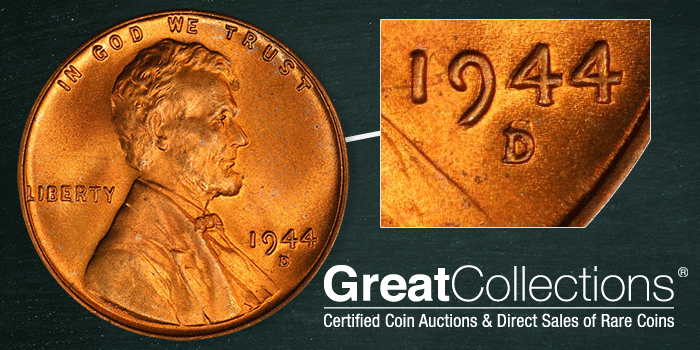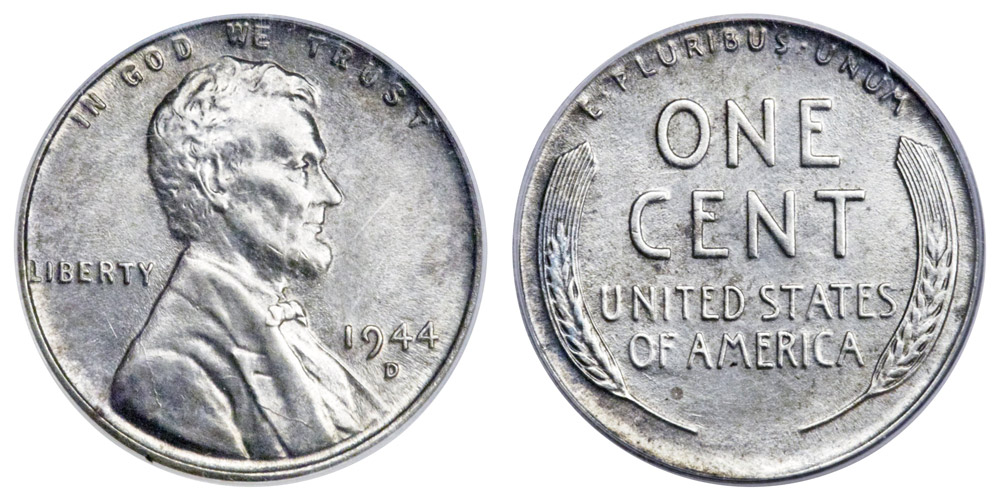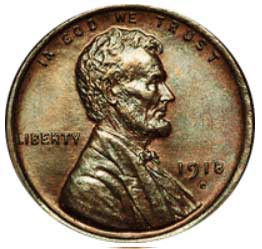1944 D Wheat Penny Value


One of the most popular types of coins to collect are penny errors. This broad category includes most of the unusual Lincoln cents that have managed to escape the United States Mint over the years.
USA Coin Book Estimated Value of 1944-D Lincoln Wheat Penny (D Over S Variety) is Worth $87 in Average Condition and can be Worth $458 to $716 or more in Uncirculated (MS+) Mint Condition. Click here to Learn How to use Coin Price Charts. Also, click here to Learn About Grading Coins. #2 1944 Steel Wheat Penny – $7,500 – $200,000. The opposite case to the 1943 bronze coinage is the zinc-plated steel coinage, the 1944 Wheat Penny. In December 1943, it was agreed that these coins would be re-minted in bronze, but some coin blanks were leaked with the new wedges, and very few units were produced in the previous year’s. 1944 D LINCOLN WHEAT CENT PENNY. Or Best Offer +C $5.00 shipping. 1 S T p B V F 7 o T n U s o r E E 2 e d. RARE 1944 WHEAT PENNY NO MINT MARK.
1944 D Wheat Penny Value Focus on the User has estimated the 1944 D Wheat Penny value at roughly 15 cents, one in a certified mint state (MS+) could be valued at $6. This coin price can vary at auction. Pricing the 1944 Lincoln Penny. If you are attempting to price the 1944 Lincoln penny, there are a few different things you must take in to consideration. First, because there were up to 3 different types of Lincoln pennies produced every year, the exact type of coin plays into its value.
This is a complex area of the hobby, as the Lincoln cent has been in production since 1909 and covers more than a century of numerous errors. What’s more, determining their values is mostly dependent on the individual magnitude of the error and the coin’s condition.
This article will provide an at-a-glance review of the most valuable errors and varieties. One should consult a Lincoln cent reference book to understand better the many varieties found among Lincoln cents. One of the best books on the topic is A Guide Book of Lincoln Cents, by Q. David Bowers (Whitman Publishing).
A List of Lincoln Cent Errors and Values
- 1922-D (no “D”) – $500+
- 1943 Bronze – $100,000+
- 1944 Steel – $75,000+
- 1955 Doubled Die Obverse – $1,000+
- 1969-S Doubled Die Obverse – $25,000+
- 1972 Doubled Die Obverse – $300+
- 1982-D Copper Small Date – $10,000+
- 1992 Close AM – $5,000+
- 1995 Doubled Die Obverse – $30+
- 1998 Wide AM – $20+
- 1999 Wide AM – $400+
- 2000 Wide AM – $20+
One of the trickiest Lincoln cent errors to catch is the 1922-D 'no D.' This is a famous example of a 'filled die' error. Grease from the coining press can get on a die, filling a design element. Coins struck with that die will be missing that design element.
In the case of the 1922-D 'No D' Lincoln cent, grease filled the 'D' mint mark in a die. Lincoln cents struck with this die are missing the 'D' mint mark. This made the pennies look like they were minted in Philadelphia, which does not have a mint mark. The only reason that this famous 'no D' error was discovered, was that Philadelphia didn't make Lincoln cents in 1922.

Frequently Asked Questions About Lincoln Penny Errors
What Pennies Are Worth Keeping?
Every Lincoln cent struck before 1982 (except for the 1943 wheat penny) were made from a mostly copper composition. They are now worth closer to two cents for the metal value. Lincoln wheat cents were all bronze, struck from 1909 through 1958. Bronze Lincoln Memorial cents were struck from 1959 to 1981. (Both bronze and zinc cents were minted in 1982.) Lincoln cents have been struck from copper-coated zinc since 1982.
Beyond copper content, the collector should focus on the dates listed above. Also check any and all pennies that appear to have mistakes or other oddities on them. While further inspection may reveal many of those “errors” to be only post-mint damage, it’s best to save what looks odd first and then rule it out (or in) as an error. You wouldn't want to pass up an opportunity at saving a coin you weren’t sure about but spent out of haste or doubt.
What Year Pennies Are Valuable?
1909-S VDB Lincoln Wheat cent
The answer to this question is similar to the previous one. However, if we are adding rare regular-issue dates to this list, consider the following valuable Wheat pennies:
- 1909-S – $100+
- 1909-S VDB – $600+
- 1911-S – $40+
- 1914-D – $150+
- 1924-D – $30+
- 1931-S – $100+
1944 D Wheat Back Penny Value
The Whitman 'Red Book' Guidebook to U.S. Coins is often called the 'official price guide to US coin collecting.' The Red Book does not list mint error coins, but it does list all major varieties, such as double dies and repunched mint marks. This can help you identify valuable pennies and old coins even without a current price list.
What Is An Error Penny?
An error penny is any one-cent coin that was misstruck during production at the U.S. Mint. Strike errors include such things as broadstrikes and off-center coins. Transitional errors can happen when a coin's composition changes, but the old dies are used. Die errors include filled dies, die cracks, and die doubling. Doubled die Lincoln cents aren’t technically errors, but rather are in a class of coins known as varieties. The 1955 Double Die Obverse Lincoln cent is one of the most famous double die U.S. coins.
What Year Pennies Have Errors?
Technically, errors can be found on a Lincoln cent from any year! That’s why it’s worth paying close attention to all the coins that go through your hands, and to investigate further any coin that appears odd or unusual. If you’re looking for a more specific answer, please refer to the list above for the most notable penny errors.
What Are The Different Types Of Errors?
Some of the most common penny errors include off-center coins, broadstrikes, and clipped planchets. Note that doubled dies, repunched mint marks, and die breaks are technically not errors, but rather varieties. These anomalies were created in the die creation stage or by way of wear-related changes to the die. Coin errors are created during production of the individual coin itself.
What Is A Broadstrike Error?
A broadstrike error occurs when the coin is struck without its retaining collar in place. The retaining collar not only keeps the coin round and forms the edge, it can add lettering or designs like reeding to the edge.
A broadstrike coin is usually thinner and wider than average, since there is no collar to limit its size. To be numismatically classified as a broadstrike, the entire design must be visible. This definition helps set broadstrikes apart from off-center coins.
How Do You Tell If Your Coin Has An Error?
It’s best to compare the coin that seems to be an error to other known examples of that error. This is where educational websites and coin books can be of most help. Unfortunately, many of the things that appear to be errors to new collectors are just forms of post-mint damage and thus add no value to the coin.
The body of error coinage is so vast that it can’t feasibly be examined here in a paragraph or two. It’s best to consult an educational website or reputable reference guide for detailed information.
Two trusted sources are the Combined Organization of Numismatic Error Collectors of America (CONECA), and the two-volume Cherrypickers’ Guide to Rare Die Varieties by Bill Fivaz and J.T. Stanton (Whitman Publishing, 2008).
Which 1982 Penny Is Worth The Most?
1925 S Wheat Penny Value
The most valuable 1982 penny is a transitional error caused by the move from 95% copper to 99.2% zinc composition. It’s the 1982-D 'small date' Lincoln Memorial cent made from copper. There wasn't supposed to be any 'small date' bronze Lincoln cents struck in Denver in 1982.
Leftover copper planchets struck with the new 'Small Date' dies meant for zinc coins caused this error coin rarity. This is technically a 'wrong planchet error,' even though both types of blanks were meant for Lincoln cents.
The 1982-D Small Date Bronze Lincoln cent is often regarded as the “eighth variety” of a year that contained seven regular-issue Lincoln cent varieties.
The seven 'regular' 1982 Lincoln cent varieties are
1944 Penny Worth One Million Dollars

- 1982 'Large Date' bronze;
- 1982 'Small Date' bronze;
- 1982 'Large Date' zinc;
- 1982 'Small Date: zinc;
- 1982-D 'Large Date' bronze;
- 1982-D 'Large Date' zinc;
- 1982-D 'Small Date' zinc.
The 1982-D copper small date was not discovered until 2016. It is worth more than $10,000.
How Much Is A 1999 Penny Worth?
Most 1999 pennies are worth only face value if worn. A handful of varieties are known, showing the bases of the letters “A” and “M” of 'AMERICA' on the reverse further apart from each other than usual. These so-called 1999 Wide AM pennies are coins worth around $400 each.
What Is The Rarest Penny?
That’s the $64,000 question! Ironically, the most valuable Lincoln cent ever sold is worth much more than even that. In 2010, the only known 1943-D bronze Lincoln cent sold for $1.7 million. The coin, graded by Professional Coin Grading Service as PCGS MS64BN (Brown), crossed the block at a Legend Numismatics auction. The seven-figure sale of this rare coin made headlines all around the world.
Joshua McMorrow-Hernandez is a journalist, editor, and blogger who has won multiple awards from the Numismatic Literary Guild. He has also authored numerous books, including works profiling the history of the United States Mint and United States coinage.
More coin collecting articles from Gainesville Coins:
CoinTrackers.com has estimated the 1944 D Wheat Penny value at an average of 15 cents, one in certified mint state (MS+) could be worth $6. (see details)...
Type:Wheat Penny
Year:1944
Mint Mark: D
Face Value: 0.01 USD
Total Produced: 430,578,000 [?]
Silver Content: 0%
Numismatic Value: 15 cents to $6.00
Value: As a rough estimate of this coins value you can assume this coin in average condition will be valued at somewhere around 15 cents, while one in certified mint state (MS+) condition could bring as much as $6 at auction. This price does not reference any standard coin grading scale. So when we say average, we mean in a similar condition to other coins issued in 1944, and mint state meaning it is certified MS+ by one of the top coin grading companies. [?].
Additional Info: Look for the S over the D mint mark error on the 1944 Wheat Penny. One in good condition can fetch $100-500
1944 D Wheat Penny Value Chart
More of the Same

All US Pennies 1859 to 2021
Most Valuable Coins by Type...
[Top of Page]
**When we say that 430,578,000, of these coins were produced or minted in 1944 this number doesn't always match the actual circulation count for this coin. The numbers come from the United States mint, and they don't reflect coins that have been melted, destroyed, or those that have never been released. Please keep that in mind.
[Top of Page]
***Price subject to standard supply and demand laws, dealer premiums, and other market variations. Prices represent past values fetched at online auctions, estate sales, certified coins being sold by dealers, and user submitted values. While we wholeheartedly try to give honest price estimates there are many factors besides appearance, metal content, and rarity that help make up the coins overall value.Call or visit your local coin dealer for more information.
We use user submitted pictures please read that article if you are interested in adding your own.
[Top of Page]